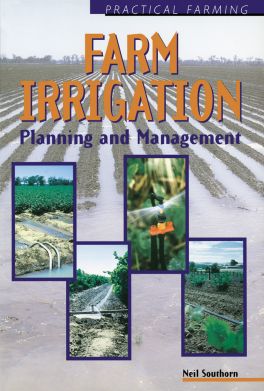Description
There is no doubt that irrigation makes a major contribution to agricultural production, making a whole range of crops viable in an otherwise unreliable climate and helping insure against drought. However irrigation does not automatically guarantee a profit and acclaim, it is a high cost exercise, using water from increasingly scarce supplies, and contributes to environmental concerns of the community. Many of the pressures facing some irrigators have been caused by a lack of understanding in the past of best practices necessary in design, installation and management.
Alternative methods of irrigation are presented, emphasising the characteristics of each that may make them suitable (or unsuitable) for particular situations. The range of crops under irrigation is very wide, and so too is the range of methods available to get water to them. Horticultural crops are included as well as broadacre crops. This section is followed by technical information of the various components that make up an irrigation system, and their installation.
Irrigation is concerned with providing the optimum soil moisture conditions for plant growth. So to is drainage, in that too much water in the soil will retard growth. Many of the concepts surrounding irrigation are applicable to a consideration of drainage, so the book discusses that technology as well.

